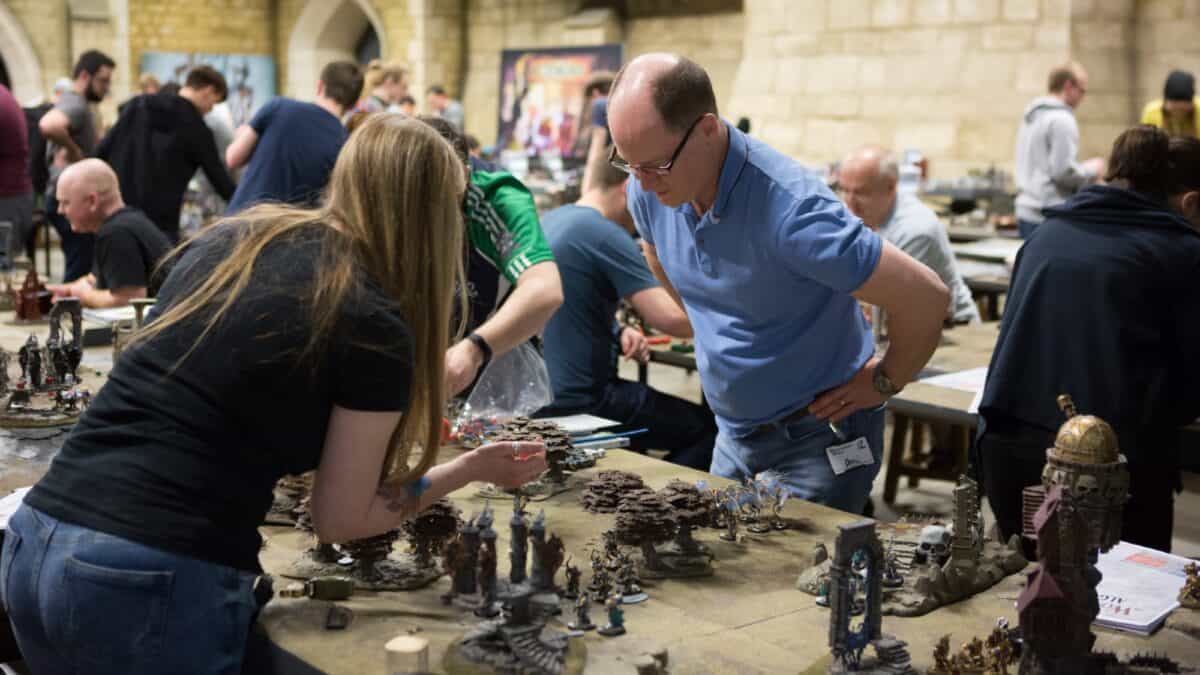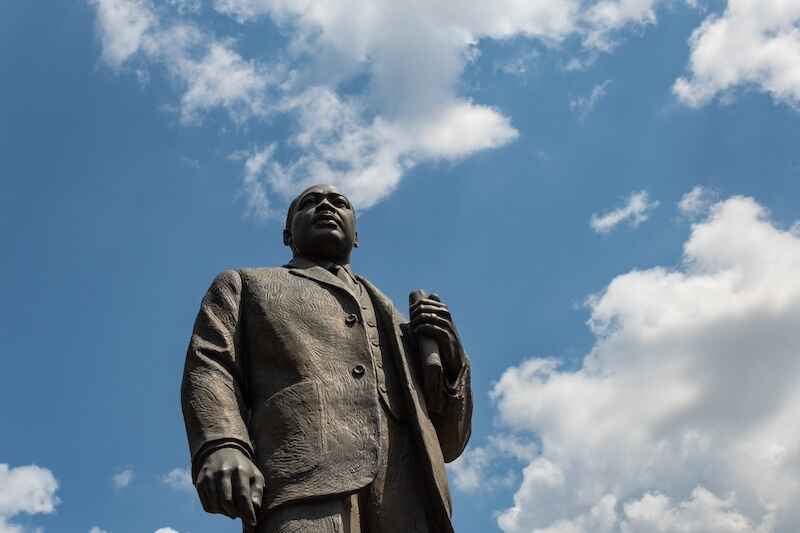It was easy to lose money in stocks in 2022. Even the most sophisticated investment managers found it hard to dodge the double-digit falls in most major equity markets. Contestants in FT Money’s stockpicking contest suffered the same fate.
Only a quarter of nearly 1,200 readers and journalists who joined the annual battle of financial wits managed to eke out a positive return, down from roughly half who profited the year before.
Still, readers can take comfort that they didn’t do worse than the professionals, despite the paid fund managers’ vastly greater resources. Only about a third of active fund managers did better than passive index trackers in 2022, according to a study of 800 funds by investment platform AJ Bell.
“2022 was the year of valuation reset with many economies exiting the pandemic period of nearly ‘free money’ as rates skyrocketed,” says Natasha Ebtehadj, portfolio manager at Columbia Threadneedle Investments.
Global equity and bond markets shed more than $30tn in value in 2022, suffering from the war in Ukraine and interest rate rises unleashed by central bankers battling to reduce inflation. The worst year for financial markets since 2008 saw the MSCI World benchmark of global equities lose a fifth of its value. In the US, the blue-chip S&P 500 shed 19 per cent and the tech-heavy Nasdaq fell by a third.
Against this brutal backdrop, FT readers put in an impressive performance. Around 60 per cent of contestants beat the wider market — a better result than the professionals surveyed by AJ Bell.
The playing field between our contest and investing professionals, however, is not exactly even. The FT contest, which began life as an in-house league for journalists, boils down stockpicking to its essentials. At the beginning of the year, competitors choose five stocks from major global markets to go long or short, betting on whether each stock’s prices will rise or fall by the year-end.
Wimpy precautions such as hedging, as well as tedious complexities such as adjusting for currencies and dividends are all ignored in this bare knuckle prognostication contest.
Competitors mostly named their picks for 2022 in the relatively calm days of early February when analysts were still arguing over whether inflation was “transitory”, bitcoin’s price was at $44,000 and a renewed Russian invasion of Ukraine was still a geopolitical risk on the horizon.
The first tremors hit just before the FT contest deadline. Wall Street recorded one of its worst days in 12 months on February 4, after weak Meta earnings, in a foretaste of the Big Tech sell-off that would get an awful lot worse by the end of the year.
The decision by Jay Powell, chair of the US Federal Reserve, to stick his foot on the interest rate accelerator had a dramatic effect on contestants’ fortunes, puncturing equity market optimism and hitting tech stocks especially hard.
Meanwhile, Vladimir Putin invaded Ukraine, with far-reaching consequences for the world economy, and Chinese leader Xi Jinping kept investors guessing about Beijing’s Covid policies.
As it turned out, conflict in Europe and the possibility of China’s economic reopening were the two themes underpinning the winning strategy in this year’s FT contest. Congratulations to former business reporting manager Tyler Yarnell, who won the 2022 contest with a return of 119 per cent last year on his all-long portfolio.
Describing himself as an “unemployed vagabond seeking job opportunities”, Yarnell’s stock picks show that time off on sabbatical, travelling in Asia, Europe and North America, was a more productive alternative to “quiet quitting”.
“It didn’t take a big jump to see the writing on the wall, that if things came to fruition, oil would skyrocket,” Yarnell says of the months preceding Putin’s planned invasion. Speaking from Thailand, he notes the reopening of China failed to materialise in time, but he was still able to make outsized gains from tanker companies Ardmore and Scorpio.
What were the most popular bets?
Although China and Europe were the key to the winning strategy, it was a US stock, Tesla, that once again was the most popular and divisive stock in the competition.
More than a fifth of our contestants placed a bet on Elon Musk’s electric-car maker — with two-thirds going short. The stock had already slumped by a quarter from its peak in November 2021 to early February. Tesla bulls read this as a sign that its stock was oversold. They were wrong.
After years of humiliation, Tesla bears finally had their moment in 2022 as the stock plunged 65 per cent. The company’s market cap, which surpassed $1tn in 2021, plummeted south of $400bn.
Tesla’s fall epitomised the massacre of growth stocks. Each of the big tech names had several dozen backers among FT contestants, and all were taken to the cleaners.
Along with big tech, crypto stocks are heavily represented at the bottom of the league table. Long Coinbase, the US-listed crypto exchange, was a popular and disastrous pick. Other crypto proxies such as MicroStrategy, the software company converted by Michael Saylor into a Bitcoin ETF in all but name, also suffered.

One optimistic crypto believer summed up their strategy as follows: “Each of the five companies stands to benefit from the public’s rapid disillusionment with the increasingly obsolete legacy financial system.”
It appears that the legacy financial system has at least a few years of life left, a point which resonated with the next three readers behind Yarnell, all of whom shorted crypto mining companies for returns in excess of 80 per cent.
“I would have probably made similar arguments about why the crypto crash was inevitable for several years beforehand,” says New-York based multi-asset analyst Daniel Morgan, who took second place. “A world of free money was coming to an end and one place that was really vulnerable was crypto.”
Most of the best picks in the contest were shorts, which is to be expected in a year of tumbling markets. Among strong long bets, energy and commodities firms were well represented.
The best long bet made by more than a handful of contestants is a good example of clever (or lucky) investors buying the dip. FTSE 100 Fresnillo, the Mexican precious metals miner that is one of the world’s largest gold and silver producers, slashed its guidance in late January blaming Covid-19 and new labour laws in Mexico. The stock dropped and remained down at the start of the competition. It then rebounded giving backers a tidy profit.
How did FT readers do?
For our winner, Yarnell, resources firms Cenovus Energy, Suncor Energy and Canadian Natural Resources were decent performers, but outstripped by more spectacular gains in shipping. Unlike his real portfolio, which is concentrated in dividend yielding tobacco, Yarnell’s picks for the FT’s contest focused on cash flow and the prospect of share buybacks.
His success is all the more laudable since the average reader suffered losses around 12 per cent. “It was easier to be bearish than bullish,” writes Paul Phazey. A serial top-fiver, the London-based investment manager previously shorted lockdown “meme stocks” and decided 2022 was the year to move against crypto.
All of this year’s FT best performers have a financial background and most admit their real personal portfolios suffered much like the rest of the market. Our short sellers stressed their contest picks would have been too risky with real money, with Morgan saying it was like “swinging for the fences”.

Christopher Pu says he thought it was “better to go concentrated and all-in on one type of thing”. The equity researcher, based in Edmonton, Canada, bet against crypto, earning him average returns of 81 per cent.
But our crypto-shorters felt that in a tough-looking year it was better to pick losers than winners. Phazey’s short pick of Stronghold Digital Mining for example, returned a stonking 95 per cent as its shares plummeted, and his decision mirrored the market where funds doubled their bets against the company last year.
The most balanced spread of our top performers fell to commodities analyst Stefan, who asked the FT not to use his last name. His decision to go long with Bunge (agriculture), Glencore (mining) and Scorpio Tankers (oil and gas) as proxies for major commodities helped him round out the top five. He observes “commodities were already on a bull run” at the start of last year and had started to go up with inflation.
Second-placed Morgan is optimistic and says the market may have returned to a place where “fundamentals will really matter”. This year, he will be looking for profitable companies promising “real innovation and real benefits for the world”. A brave blast of the positive in difficult times.
How did FT journalists stack up?
The hands-down winner among journalists was a mainstay of the FT Money desk, production editor Andy Tilbrook, who triumphed with a portfolio of mostly British “safe companies”. His solo short pick was UK electronics retailer AO World, which he rightly predicted would continue to struggle with high UK inflation.
“Having performed quite dismally in the past two years in this competition, I was astonished to top this year’s league of FT staffers,” says Tilbrook. “This was a portfolio formed from half-remembered articles, pure luck and a little sentiment.”
Readers may perhaps be reassured that the editor tasked with making sure our personal finance coverage is immaculate is such a shrewd market judge. Particularly canny was his backing of the UK publisher Pearson, former owner of the FT. Pearson’s poor stock in recent years has been a sore point for FT journalists who still own shares.
“In the days when the FT was part of Pearson’s publishing stable I owned shares in the parent company . . . By total chance, I managed to sell the shares very close to the top of the market and I’ve taken an occasional interest in how the stock has fared ever since,” says Tilbrook. “So when I saw how far its price had dwindled I thought maybe, just maybe, it was due a bounceback.”
The second-place journalist Henry Foy owes his success to geopolitical judgment. The European diplomatic correspondent and former Moscow bureau chief opted for a long-short mix of energy and resource companies premised on predicting the war in Ukraine.
“It’s not great to know you profited from a barbaric war, but given Putin made it so obvious he was going to do something horrendously stupid, I don’t think my intelligence source tips count as insider trading,” says Foy.
The rules allow players to pick only individual companies but many can act as proxies for broader shifts. “The FT didn’t let me trade Russian oligarchs, but going long on western oil and defence companies and shorting one of Ukraine’s biggest exporters was the next best thing.”
Another top performer among journalists was Ethan Wu, who writes for the FT’s Wall Street newsletter Unhedged. Wu succeeded thanks to “the banal view that the meme stock frenzy, fuelled by loose money, would finally unwind as monetary policy tightened in 2022.”
Wu says: “Although short speculation was a winning trade this time round, all things considered it’s startling how modest the declines have been. GameStop’s price is still 5x what it once was!”
As is customary in this annual event, readers beat the FT staff by a wide margin. Only five journalists actually ended the year with their portfolio in the black. Most lost money. Many lost a lot of money.
Perhaps readers planning for the 2023 contest should take advice from the 2022 winner. Yarnell will return to the place he made his picks last year, Chiang Mai in Thailand, in time for this year’s edition. But instead of taking in the local sights, he’ll set his eyes on his next investment target — small Canadian gas companies.
When asked about his future life plans, Yarnell chuckles and says that the questioner “sounds like his parents”. He says he’ll keep travelling until he’s bored, but hopes a mention in the FT article might see him picked up by an “investment genius for my dashing good picks”.
How do I play in 2023?
Stockpickers will have their work cut out trying to predict the markets in 2023. Soaring inflation, economic slowdown and war in Europe all generate uncertainty.
But astute — or lucky — investors can spot companies that stand to benefit from economic and political shifts. So why not try to match them — and pit your wits against the FT’s writers — in the next round of our annual stockpicking contest?
It’s a game anybody can play. We invite contestants from all walks of life and of any age. Why not get your children or grandchildren to join in? Sit around the kitchen table and pick your stocks, and see who gets to be the family champion.
Contestants must choose five stocks from around the world and take either a long or short position — betting that the shares will either rise or fall. The winner is the person who generates the highest overall return on their portfolio. No money is wagered — so the only potential loss is your pride. Entries will close at midnight GMT on Sunday January 22, and the contest will be judged on the gains or losses made between Monday January 23 and December 31.
The competition entry form is at FT.com/stockpick2023, where you can enter your five picks. The three readers whose portfolios perform best in the 2023 contest will be invited to the FT’s offices in London early in 2024. Good luck!
Credit: Source link














